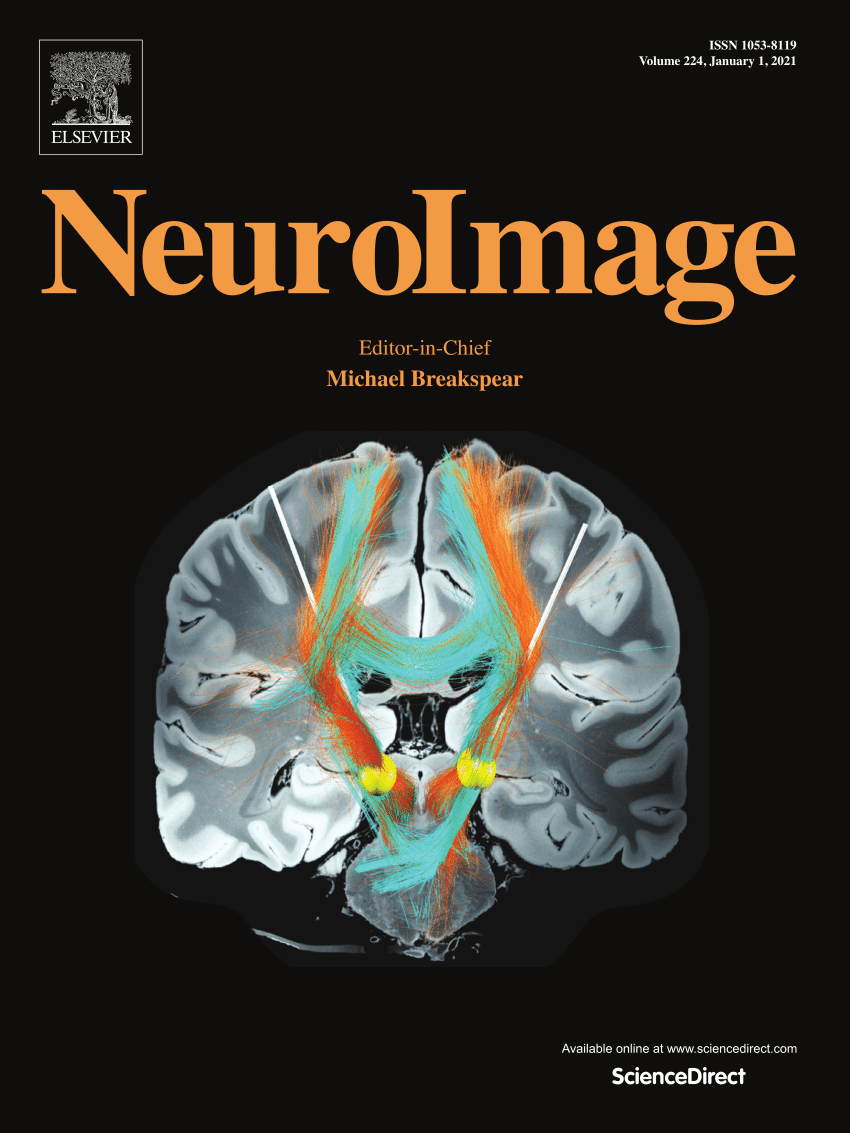White matter hyperintensity tissue property spatial variations as a function of cognitive status in Parkinson’s disease
IF 4.7
2区 医学
Q1 NEUROIMAGING
引用次数: 0
Abstract
Background and purpose
The pathological relationship between white matter hyperintensities (WMH) and cognitive impairment in Parkinson's disease (PD) remains unclear due to their variable locations, heterogeneity, and limited assessment of underlying tissue properties. This study integrates T2-FLAIR and quantitative MRI (qMRI) to investigate burden, spatial distribution, and extent of tissue alterations in WMH, aiming to elucidate their role in cognitive decline among PD patients.
Methods
A total of 122 age- and sex-matched PD patients and 65 healthy controls (HC) were recruited, with PD patients grouped by Montreal Cognitive Assessment (MoCA) score including normal, mild cognitive impairment (MCI) or PD with dementia (PDD). WMH burden was compared across groups and cognitive status. Water content, T1, and T2* measures were derived from qMRI data and tissue property heatmaps and periventricular distance profiles were constructed for all groups to visualize location-dependent tissue alterations of WMH relative to the lateral ventricles. In addition, voxel-wise analysis was performed to examine the correlation between WMH lesion tissue properties and MoCA scores.
Results
WMH volume was significantly higher in PDD compared to other groups (p < 0.05) and negatively correlated with MoCA scores (r = −0.352, p < 0.001). WMH appeared predominantly around the lateral ventricles, with anterior horn involvement common to all groups and posterior horn involvement specific to PDD. qMRI measures were significantly elevated in WMH compared to normal appearing white matter (NAWM) (p < 0.001), with heatmaps showing a negative gradient of tissue property changes from the lateral ventricles to the NAWM. Voxel-wise analysis revealed a significant negative correlation between the qMRI tissue properties of periventricular WMH and MoCA scores, with the strongest association observed in the periventricular WM situated just beyond the boundary of the lateral ventricles.
Conclusion
Over and above volume differences, the spatial distribution and tissue property variations of WMH were closely linked to cognitive impairment in PD patients, with distinct patterns across different cognitive stages.
帕金森病患者认知状态的白质高强度组织特性空间变化
背景与目的白质高强度(WMH)与帕金森病(PD)认知功能障碍之间的病理关系尚不清楚,因为它们的位置不同、异质性和对潜在组织特性的评估有限。本研究结合T2-FLAIR和定量MRI (qMRI)研究WMH的负担、空间分布和组织改变程度,旨在阐明其在PD患者认知能力下降中的作用。方法共招募年龄和性别匹配的PD患者122例和健康对照(HC) 65例,PD患者按蒙特利尔认知评估(MoCA)评分分为正常、轻度认知障碍(MCI)或PD合并痴呆(PDD)。比较各组和认知状况之间的WMH负担。含水量、T1和T2*测量来自qMRI数据,并为所有组构建组织特性热图和心室周围距离分布图,以可视化WMH相对于侧脑室的位置依赖性组织改变。此外,进行体素分析以检查WMH病变组织特性与MoCA评分之间的相关性。结果PDD组swmh体积显著高于其他组(p <;0.05),与MoCA评分呈负相关(r = - 0.352, p <;0.001)。WMH主要出现在侧脑室周围,所有组均累及前脑角,PDD特有累及后脑角。与正常白质(NAWM)相比,WMH的qMRI测量值显著升高(p <;0.001),热图显示从侧脑室到NAWM的组织特性变化呈负梯度。体素分析显示,心室周围WMH的qMRI组织特性与MoCA评分之间存在显著的负相关,其中位于侧脑室边界外的心室周围WM的相关性最强。结论除了体积差异外,WMH的空间分布和组织性质变化与PD患者认知功能障碍密切相关,且在不同认知阶段具有不同的模式。
本文章由计算机程序翻译,如有差异,请以英文原文为准。
求助全文
约1分钟内获得全文
求助全文
来源期刊

NeuroImage
医学-核医学
CiteScore
11.30
自引率
10.50%
发文量
809
审稿时长
63 days
期刊介绍:
NeuroImage, a Journal of Brain Function provides a vehicle for communicating important advances in acquiring, analyzing, and modelling neuroimaging data and in applying these techniques to the study of structure-function and brain-behavior relationships. Though the emphasis is on the macroscopic level of human brain organization, meso-and microscopic neuroimaging across all species will be considered if informative for understanding the aforementioned relationships.
 求助内容:
求助内容: 应助结果提醒方式:
应助结果提醒方式:


